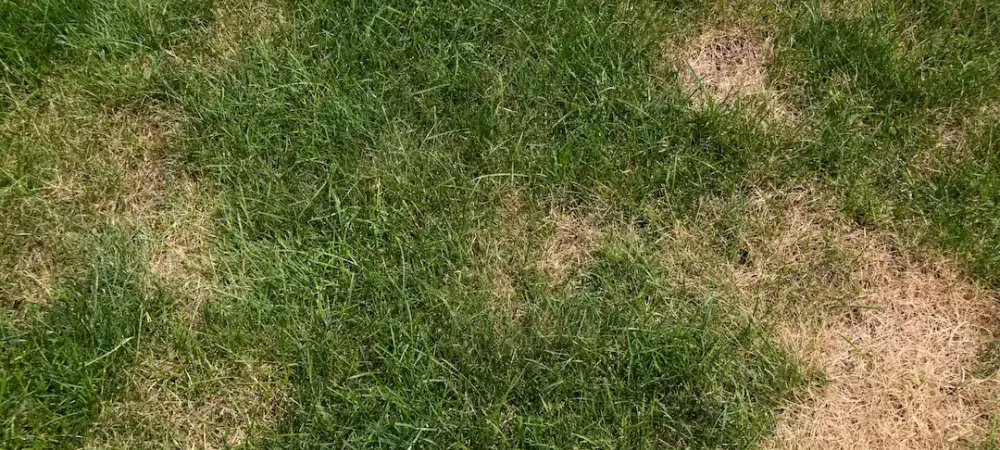
How to Spot and Treat Winter Lawn Fungus in the Southeast
Winter lawn fungus can quietly damage lawns across the Southeast, particularly in Georgia, Alabama, and South Carolina, where cool, moist conditions create an ideal environment for fungal growth. Early identification and targeted management are essential to protect your lawn’s health during these months. This guide helps homeowners recognize symptoms and apply proven treatment and prevention strategies to maintain beautiful, healthy turfgrass.
The Quick Answer
Winter lawn fungus commonly shows as brown or yellow patches, thinning turf, and fungal growth when moisture is high and temperatures drop. Treatment involves adjusting watering practices, improving lawn care through aeration and mowing, and using fungicides at the right time. Prevention hinges on proper lawn maintenance tailored to Southeastern climates, particularly in Georgia, Alabama, and South Carolina.
What Is Winter Lawn Fungus and Why Does It Matter in the Southeast?
Winter lawn fungus refers to fungal diseases that attack turf during the cooler months, especially from November through early spring, when moisture and mild temperatures favor pathogens such as brown patch and large patch disease. In states such as Georgia, Alabama, and South Carolina, these diseases can severely weaken lawns if unchecked. According to the University of Florida IFAS Extension, “Brown patch and large patch can cause circular patches of dead grass and will soften turf, making it susceptible to weeds,” a threat to lawn aesthetics and health that homeowners value.
The Southeast’s humid climate further encourages fungal growth, making awareness and proactive care vital. Overwatering or poor drainage, common in these regions, are major contributors to winter fungus outbreaks.
How to Identify and Treat Winter Lawn Fungus: Detailed Steps
- Recognize Fungus Symptoms Early
Look for:- Brown to yellow circular patches ranging from a few inches to several feet across.
- Grass blades with water-soaked or slimy lesions, often with grayish fungal growth.
- Thin or patchy turf in shadier or poorly drained spots.
- Early morning dew or persistent moisture can exacerbate symptoms.
- Modify Watering and Irrigation
- Water only in the early morning, allowing turf to dry before cooler night temperatures.
- Reduce watering amounts during cooler months to avoid excess moisture.
- Inspect irrigation systems for overwatering or uneven distribution, common causes of fungal hotspots.
- Enhance Cultural Lawn Practices
- Aerate soil annually to relieve compaction and improve drainage, especially in clay-heavy soils prevalent in Alabama and Georgia.
- Mow at recommended heights for your grass type (typically 2.5 to 3 inches for warm-season grasses) to reduce stress.
- Remove excess thatch to improve air circulation and sunlight penetration.
- Fertilize carefully during the winter months; avoid excessive nitrogen, as this can encourage fungal growth.
- Apply Fungicides Responsibly
- Preventative applications in October or early November target early fungal development.
- Use fungicides labeled for winter diseases common in the Southeast, like chlorothalonil or azoxystrobin.
- Follow label directions to ensure effective and safe treatment, respecting local environmental guidelines.
- Repeat treatments may be necessary during prolonged wet periods, but avoid overuse to prevent resistance.
Comparing Treatment Methods: What Works Best for Your Lawn?
Home remedies, such as baking soda or neem oil sprays, offer mild antifungal effects but generally lack the potency for established winter diseases. Cultural practices are the foundation of long-term lawn health and can reduce fungal incidence significantly by improving soil and turf conditions. Fungicides provide the quickest relief for active infections, but are most effective when used in conjunction with proper lawn maintenance.
In Southeast states like South Carolina and Georgia, environmental factors such as humidity and soil type influence which method offers the best balance of control and sustainability.
Prevention Tips for Lasting Lawn Health
- Water lawns only early in the day to allow rapid drying.
- Ensure your lawn has good drainage; consider landscaping adjustments if water pools after rain.
- Mow regularly but avoid scalping grass.
- Perform seasonal aeration, especially in compacted soils.
- Limit fertilizer applications during the cool season to balance nutrition and strengthen turf without promoting fungal growth.
- Remove leaf litter to reduce the spread of fungal spores.
When to Call the Lawn Care Experts at Unlimited Lawn Care™
If you notice rapidly spreading brown patches, recurring fungal issues, or persistent thinning that goes beyond what you can manage at home, it’s time to reach out to the experts at Unlimited Lawn Care™. Our team provides professional diagnostics and tailored fungicide treatments designed specifically for the unique conditions of Southeastern lawns. We ensure timely, effective interventions using environmentally responsible products to protect your lawn from winter fungus and restore its health.
Winter lawn fungus poses a significant threat during the cooler months but can be managed successfully with early identification, proper cultural care, and expert fungicide use. Homeowners seeking lasting protection and professional support should contact Unlimited Lawn Care™ for comprehensive lawn disease management and maintenance services. Schedule your consultation today to keep your lawn vibrant and healthy through the winter season by visiting our free quote page.
Authoritative References:
- University of Florida IFAS Extension, "Large Patch in Florida Lawns," Gardening Solutions, 30 Nov. 2023
